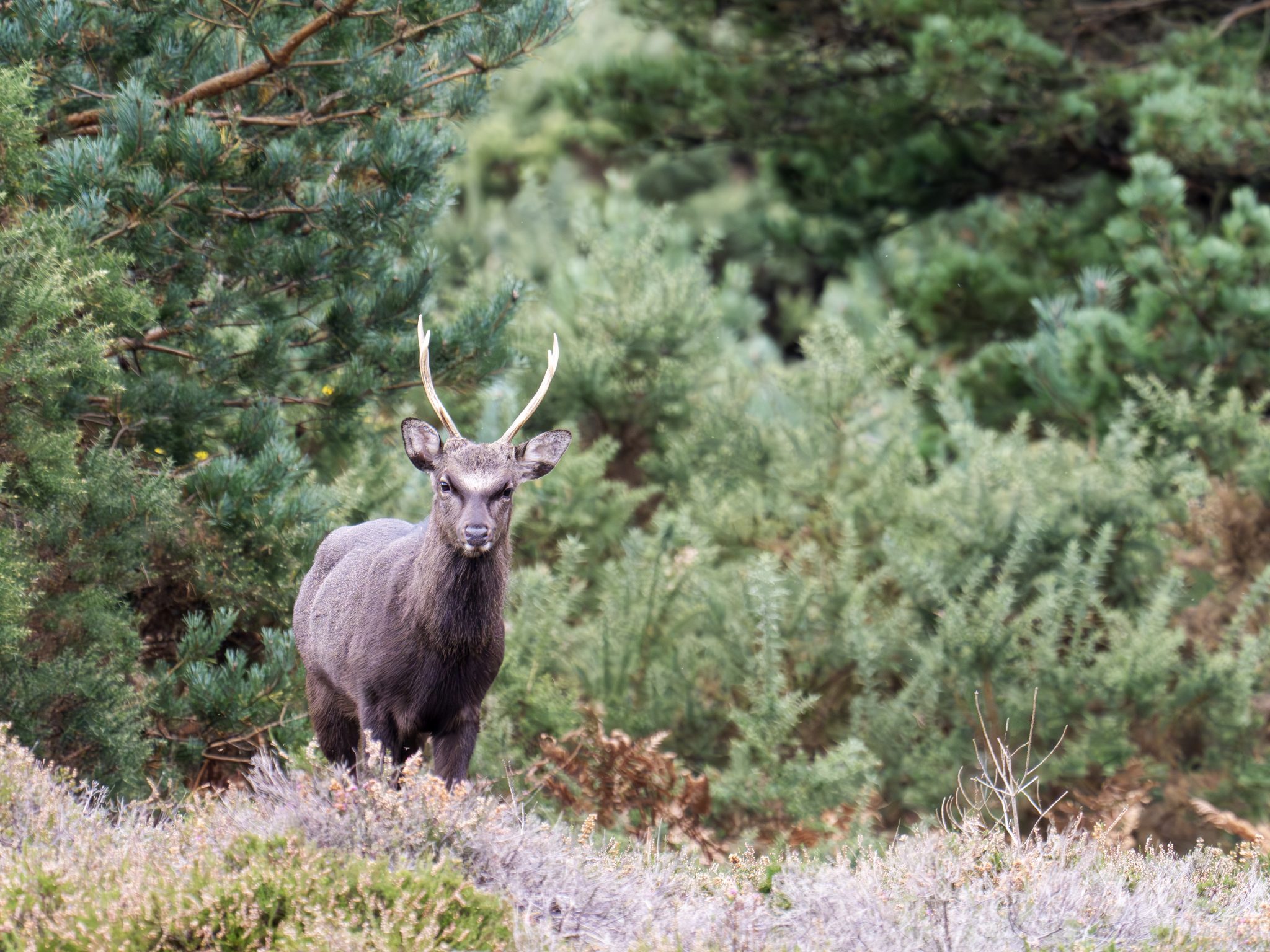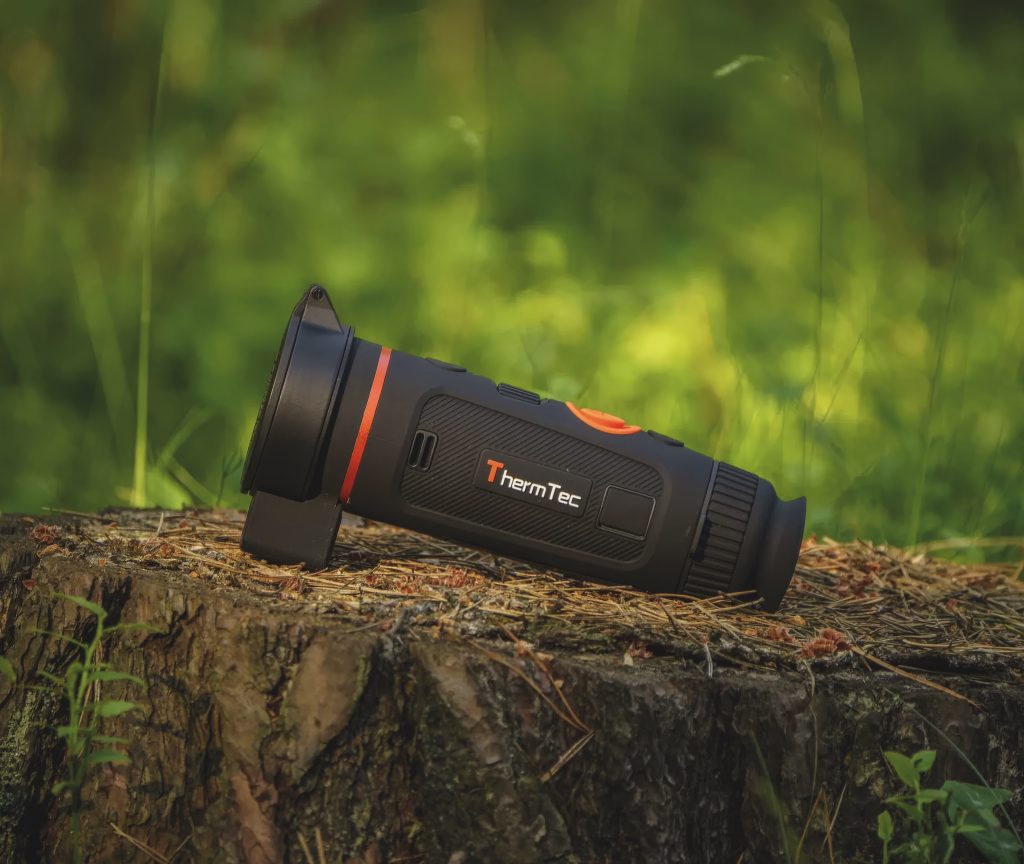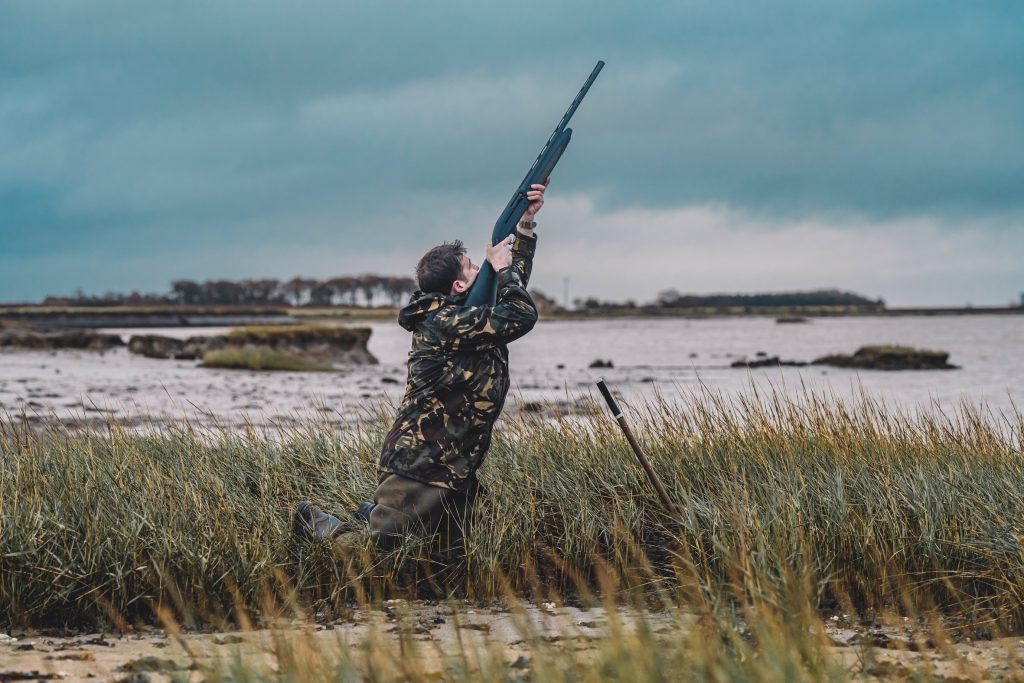Win CENS ProFlex DX5 earplugs worth £1,149 – enter here
Black powder muzzle-loading: loud, smoky, dirty and slightly addictive
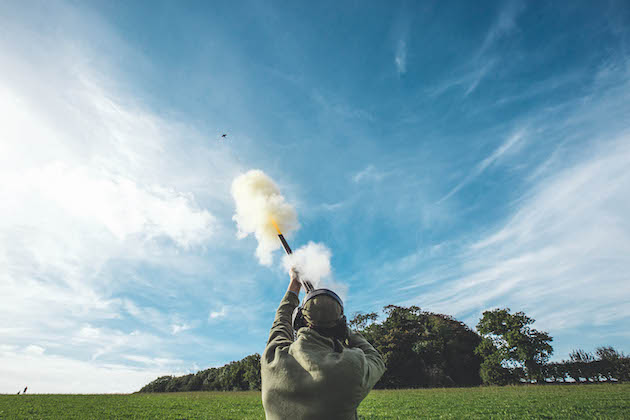 Simon Reinhold shooting
Simon Reinhold shooting
Black powder muzzle-loading is loud, smoky, dirty and slightly addictive. I’ve worked in the gun trade for nearly a quarter of a century but there are still things that I’ve never tried, such as using a ‘smoke pole’. It may have seemed to my employer Nicholas Holt that this gap in my experience needed addressing. It was at his kind invitation that I joined the line-up at Glover’s Farm in Sedgeford near the west Norfolk coast. (Read more on black powder licences here.)
It is well-drained farmland and grassland, rich in insect life and perfect for English partridges. We are told by our host John Cross that, though there is a healthy wild population that can sustain us taking a few, we should concentrate on the reared pheasants and French partridges. As readers will know, this is the very essence of shooting as conservation: supplementing wild birds with released stock so that an enjoyable season can be had while also fostering the natural biodiversity.
Briefing on black powder
We receive a second briefing from Martin Crix who, along with his partner, Claire Mills, runs Anglian Muzzle-Loaders. Martin goes through the safety aspects and the mechanics of how a 160-year-old sporting gun is loaded — an operation that you must do almost looking down the barrel. He also dispels a myth; black powder is not slower to shoot and no more lead is required, though it may feel different if you are used to a lightweight side-by-side game gun, as I would discover. (Read more on buying 12-bore black powder cartridges.)
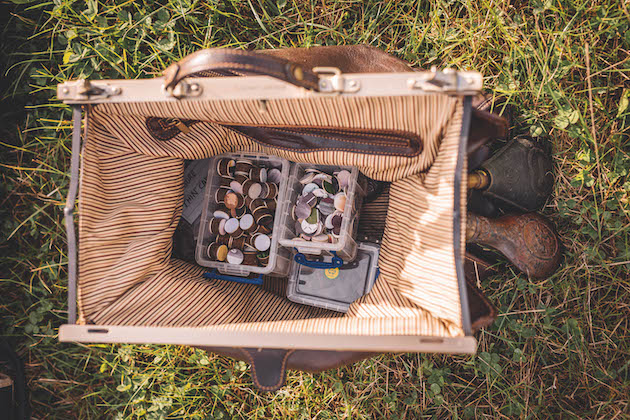
Dave Elvin’s Gladstone bag with overwads glued to wads to reduce loading time
We, as Guns, must pull the hammer back to full cock, as they will be passed only at half-cock, and as only the percussion cap is removed after the drive. The gun is not fully unloaded until the end of the day. Then we are introduced to our loaders, all enthusiasts with long experience. I am paired with Dave Elvin. Dave is reigning world champion with a flintlock so I am determined not to disappoint him.
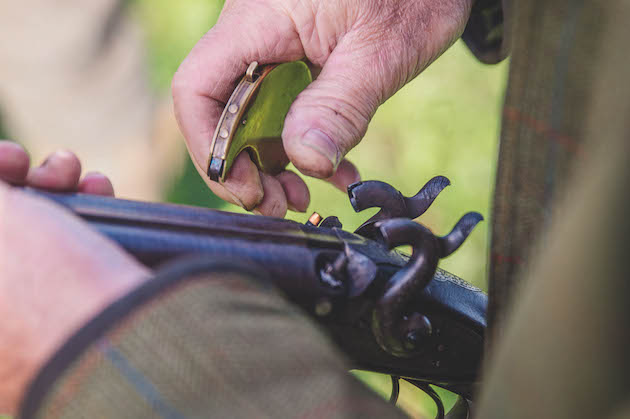
Guns must pull the hammer back to full cock
The first drive and the fact several of us are new to muzzle-loading throws up a problem. With wild game in the drive you have to be quiet. But us getting to know our loaders, and a slight change in wind direction, combine to send the wild birds out of the side of the drive. They are followed by the Frenchmen and many pheasants. This was to the benefit of those standing on pegs seven and eight and one of them, the Earl of Leicester, showed that this is not his first black powder day. It is entirely our fault and John’s admonition is gentle but firm at the end.
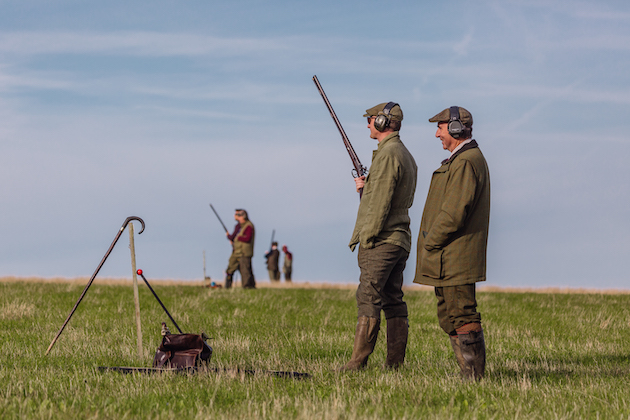
Simon Reinhold and Dave Elvin on the peg
Recoil
It does not prevent me having my first two shots at pheasants, only one of which was successful out the back. What surprises me is the recoil — it is very different from modern nitro powder. It has more force than I was expecting, but it is a gradual increase in pressure rather than a blow. The thunder and smoke produces thoughts of the first salvos of a great naval engagement, and I am left with a grin that does not recede the entire day. That beaming face, the by-product of the best of game shooting, is endemic in muzzle-loaders.
In between each drive, gourmet food is served by Tim Crowley of Crowley’s of Suffolk. Tim is everything you would expect of a bon viveur and surprises us with one carefully chosen delicacy after another. Over a damson vodka made to Tim’s recipe — which had me wondering why we bother with shop-bought cough syrup — Nick Holt explains why he prefers muzzle-loading days.
“It proves these guns can still be used for their intended purpose. You get to revel in each successful shot and you have to concentrate to make each one count,” he says. “The bag is a very small part of the day when you are muzzle-loading — there is so much else to enjoy. I’m not expecting everyone to suddenly put down their over-and-under and pick up a muzzle-loader, but I want them to be aware, like you are now, just how much fun can be had with these guns.”
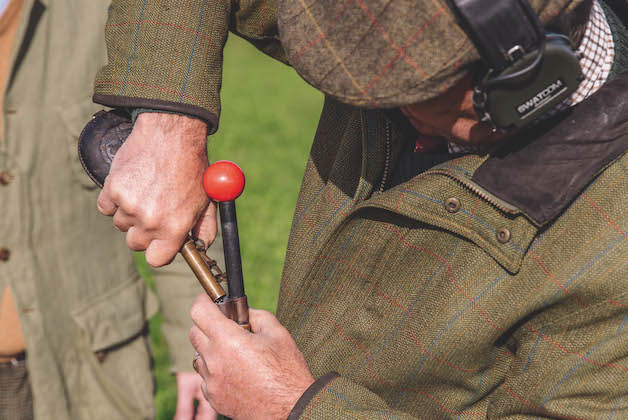
Dave Elvin uses a cane with a pool-ball handle rather than the ramrod
Epiphany
On the second drive, a hanging wood standing atop ground that rolls towards us with cover to either side, with me right for the wind and near the hedge that looks likely to be ‘route one’, I have an epiphany. The ramrod underneath the barrel is not applied by our loaders; instead, they use a sturdier home-made cane with a pool-ball handle that is more comfortable and adds extra weight to the front end of the gun. Wider ribs on these side-by-sides contributes to this and I realise that this side-by-side has to be shot like an over-and-under.
With a slower, heavier gun, a more deliberate shot is required and a sight picture and technique I am more familiar with on a clay ground. As these jigsaw pieces of knowledge fall into place, birds begin to fall out of the sky. Partridges bursting over a Norfolk hedgerow beat Guns with their speed and not necessarily height, though properly driven across a wind it can be both.
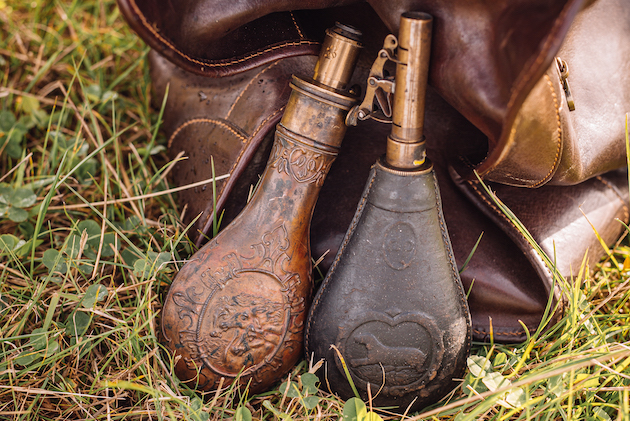
Black powder flasks
Coveys of English partridges are a different order of difficulty: as soon as they clear the hedge and see you, they starburst: changing direction in a wingbeat with their sharper, wild instincts of self-preservation. It is exhilarating and testing at the same, but our challenge as Guns is to try to identify French from English and select the former. A new problem presents itself as a result of this frenetic activity: when to reload, and it is a gamble. You have to make a judgement call as to how long the pause between birds coming through the drive will be.
As my confidence grows, I decide to keep hold of the gun after one successful barrel unless I could see the flag man had stopped on the hill, in which case I asked Dave to assist. Dave has some shortcuts that shorten the process and, despite the complication of the operation, his fluidity and precision is impressive. He glues the overpower card and an overwad card to either side of the felt wad the night before. This turns three movements into one that can be done with the wad either way up.
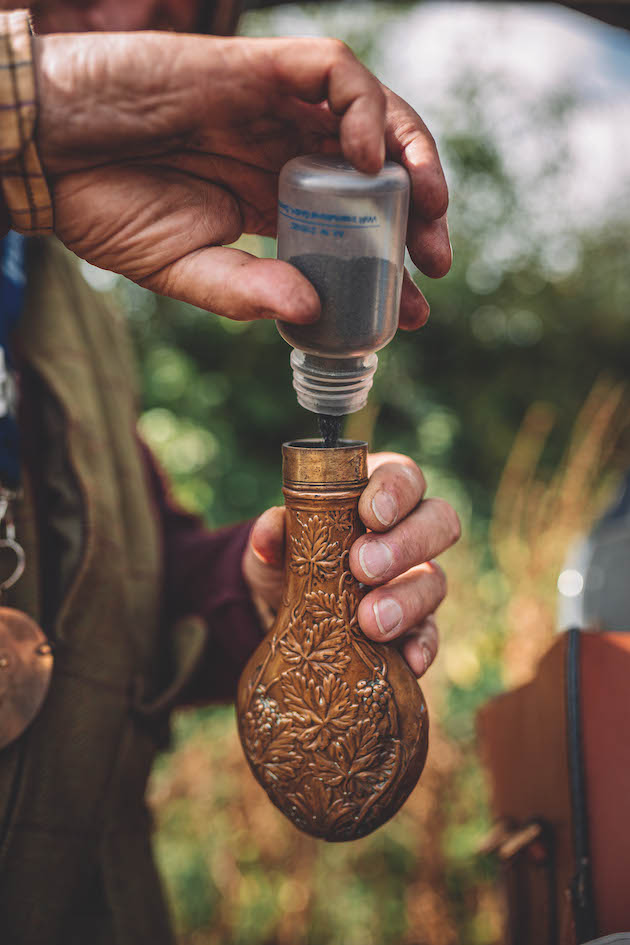
Filling a flask with black powder
As the wad is rammed home, the increase in pressure clears the nipple blocked by the residue build-up of the percussion cap and the igniting powder from the previous shot — it releases like a whale clearing its blowhole as it breaches. Dave never seems rushed and I am never aware of being left waiting. One thing you don’t do is try to hurry your loader — they don’t get distracted and keep the rod in the barrel they have already loaded with powder so as not to load the same once twice. But try to chivvy them along and you are likely to watch the shot being poured but not hear any running down the barrel — that will teach you a lesson.
The two subsequent drives are punctuated by rillettes of duck, which are joined by superb pork pies baked locally to Tim in Suffolk — the best he can find, though he says they are not commercially available. Kintyre smoked mussels, smoked trout and the freshest foie gras washed downed with a muscat is a combination that once tasted cannot be forgotten. It’s all a reminder that the pulling of the trigger is only a small part of the day.
After we finish, both barrels are emptied into the sky almost as a salute. Dave quietly says: “Next time you should shoot my 18-bore double flintlock — it’s been tuned for a fast lock time and I think you’d enjoy it.” I’m not sure I could grin any wider but that might just do it.
Related Articles
Get the latest news delivered direct to your door
Subscribe to Shooting Times & Country
Discover the ultimate companion for field sports enthusiasts with Shooting Times & Country Magazine, the UK’s leading weekly publication that has been at the forefront of shooting culture since 1882. Subscribers gain access to expert tips, comprehensive gear reviews, seasonal advice and a vibrant community of like-minded shooters.
Save on shop price when you subscribe with weekly issues featuring in-depth articles on gundog training, exclusive member offers and access to the digital back issue library. A Shooting Times & Country subscription is more than a magazine, don’t just read about the countryside; immerse yourself in its most authoritative and engaging publication.



